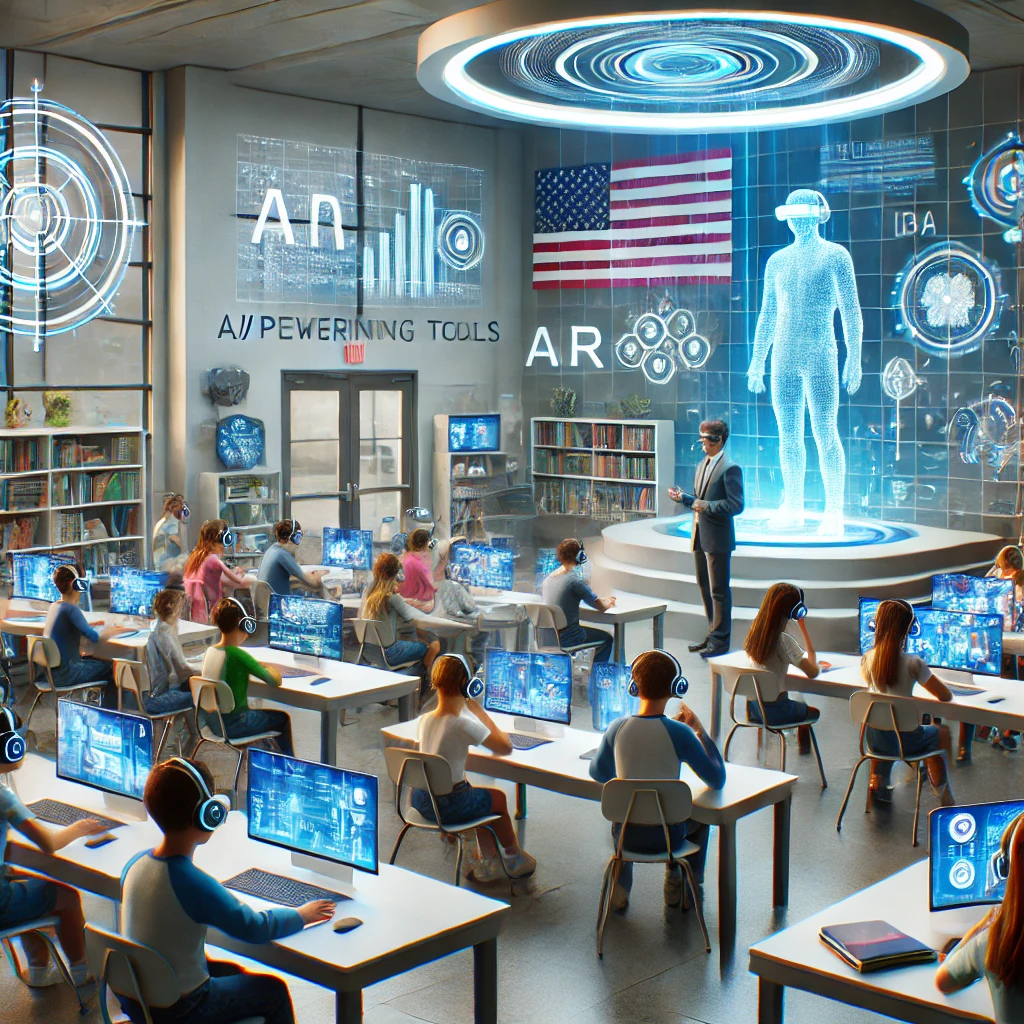Education in the United States is constantly evolving. With advancements in technology, changes in teaching methods, and new challenges facing students and teachers, the future of education looks different from what it was even a decade ago. In this article, we will explore some of the key trends and innovations shaping the future of education in the U.S.
1. Technology Integration in Classrooms
Technology is becoming a major part of education. Many schools now use smartboards, tablets, and laptops to enhance learning. Online platforms like Google Classroom and Zoom have made it easier for students to learn remotely. Artificial intelligence (AI) is also being used to personalize education, helping students learn at their own pace.
2. Growth of Online Learning
Online learning has grown rapidly, especially after the COVID-19 pandemic. Many universities and schools offer online courses, allowing students to learn from anywhere. Platforms like Coursera, Khan Academy, and Udemy provide affordable and accessible education. Hybrid learning models, which mix online and in-person classes, are also becoming popular.
3. Personalized Learning
Every student learns differently. Personalized learning uses data and technology to customize lessons based on a student’s strengths and weaknesses. Adaptive learning platforms, such as DreamBox and Smart Sparrow, adjust content based on student progress, making learning more effective.
4. STEM and STEAM Education
There is a strong focus on STEM (Science, Technology, Engineering, and Mathematics) education to prepare students for future jobs. Recently, STEAM (which adds Arts to STEM) has gained popularity, promoting creativity along with technical skills. Programs like coding boot camps and robotics competitions encourage hands-on learning.
5. Skill-Based Education
Traditional education often focuses on memorization, but the future of education is shifting toward skill-based learning. Schools are emphasizing critical thinking, problem-solving, and communication skills. Vocational training and apprenticeships are also becoming more common, helping students gain real-world experience.
6. Mental Health and Well-Being
Mental health is becoming a priority in education. Schools are introducing programs to support students’ emotional well-being. More counselors, mindfulness activities, and stress management programs are being implemented to help students cope with academic pressure.
7. Diversity and Inclusion
Education in the U.S. is becoming more inclusive. Schools are adopting policies that support students from diverse backgrounds, including those with disabilities, different cultures, and economic challenges. Multicultural education and bilingual programs are growing, helping students feel more included.
8. Sustainability in Education
Many schools are focusing on sustainability by adopting eco-friendly practices. Green schools use solar energy, recycle materials, and teach students about environmental responsibility. Education about climate change and sustainability is becoming a part of the curriculum.
9. Teacher Training and Development
Teachers play a crucial role in education, and ongoing training is essential. Professional development programs help teachers stay updated with the latest teaching methods and technologies. More focus is being placed on mentorship and peer learning among educators.
10. Future Challenges
While there are many positive changes, challenges remain. Funding for public schools, teacher shortages, and the digital divide (lack of internet access in some areas) are issues that need attention. However, with innovation and policy changes, the future of education in the U.S. looks promising.
Conclusion
The education system in the United States is evolving to meet the needs of students in the 21st century. With advancements in technology, personalized learning, mental health support, and sustainability efforts, the future of education is focused on preparing students for a rapidly changing world. While challenges exist, continuous improvements and innovations will help create a more effective and inclusive education system for all.
